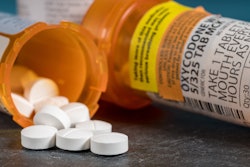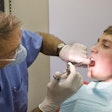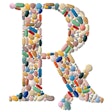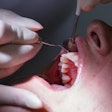Nonsteroidal anti-inflammatory drugs (NSAIDs) should be the first choice for managing acute dental pain after tooth extractions or temporary toothache relief, according to guidelines recently published in the American Journal of Emergency Medicine.
Further, opioids should only be used when NSAIDs are ineffective or contraindicated, the authors wrote.
"NSAIDs alone or in combination with acetaminophen are the first-line therapy for managing acute dental pain following tooth extraction(s) and temporary management of toothache,” wrote the authors, led by Victoria G. Green, RDH, MPH of the University of Pittsburgh School of Dental Medicine (Am J Emerg Med, December 22, 2024).
Every 15 seconds, someone visits a U.S. emergency department for a dental condition. NSAIDs are often a better option than opioids for managing acute dental pain, as they target inflammation directly and do not have the significant risks associated with opioid use, including addiction, respiratory depression, and mental health issues, they wrote.
Based on systematic reviews, meta-analyses, and patient input, this guideline addresses managing acute dental pain in adolescents, adults, and older adults, including pain from tooth extractions or severe toothaches. It aims to provide recommendations for emergency and primary care providers on using pharmacological interventions, according to the authors.
Using the Grading of Recommendations Assessment, Development, and Evaluation approach and Evidence-to-Decision Framework, the panel developed 18 recommendations and six good practice statements. Evidence from 87 randomized controlled trials indicates that NSAIDs -- alone or combined with acetaminophen -- are more effective for postoperative dental pain relief than opioids, they wrote.
For pain on the second- or third-day postsurgery, emergency physicians and advanced practice providers should first confirm the initial pain management strategy before considering giving additional prescriptions. If the patient is using guideline-recommended NSAIDs with acetaminophen and still experiencing pain, a provider can carefully add a low-dose opioid for a maximum of three days, the authors noted.
Local anesthetics and topical benzocaine may also provide immediate temporary relief. Opioids should be avoided for patients taking gabapentinoids, central nervous system active medications, or existing opioids. NSAIDs alone or with acetaminophen remain the first-line therapy, supplemented by local anesthetics as needed, Green and colleagues wrote.
Integrating dental and emergency medical services, equipping medical personnel to assess dental pain, and expanding access to preventive dental care are essential to improve timely management, optimize referrals, and reduce opioid and antibiotic overprescription, the authors added.
"Clinicians should develop a pain management plan that aligns the patient's values and preferences with the expected pain intensity, minimizes the risk of undesirable outcomes related to opioid medications, and emphasizes the importance of seeking definitive dental care to address the etiology of acute dental pain," the paper's authors concluded.




















